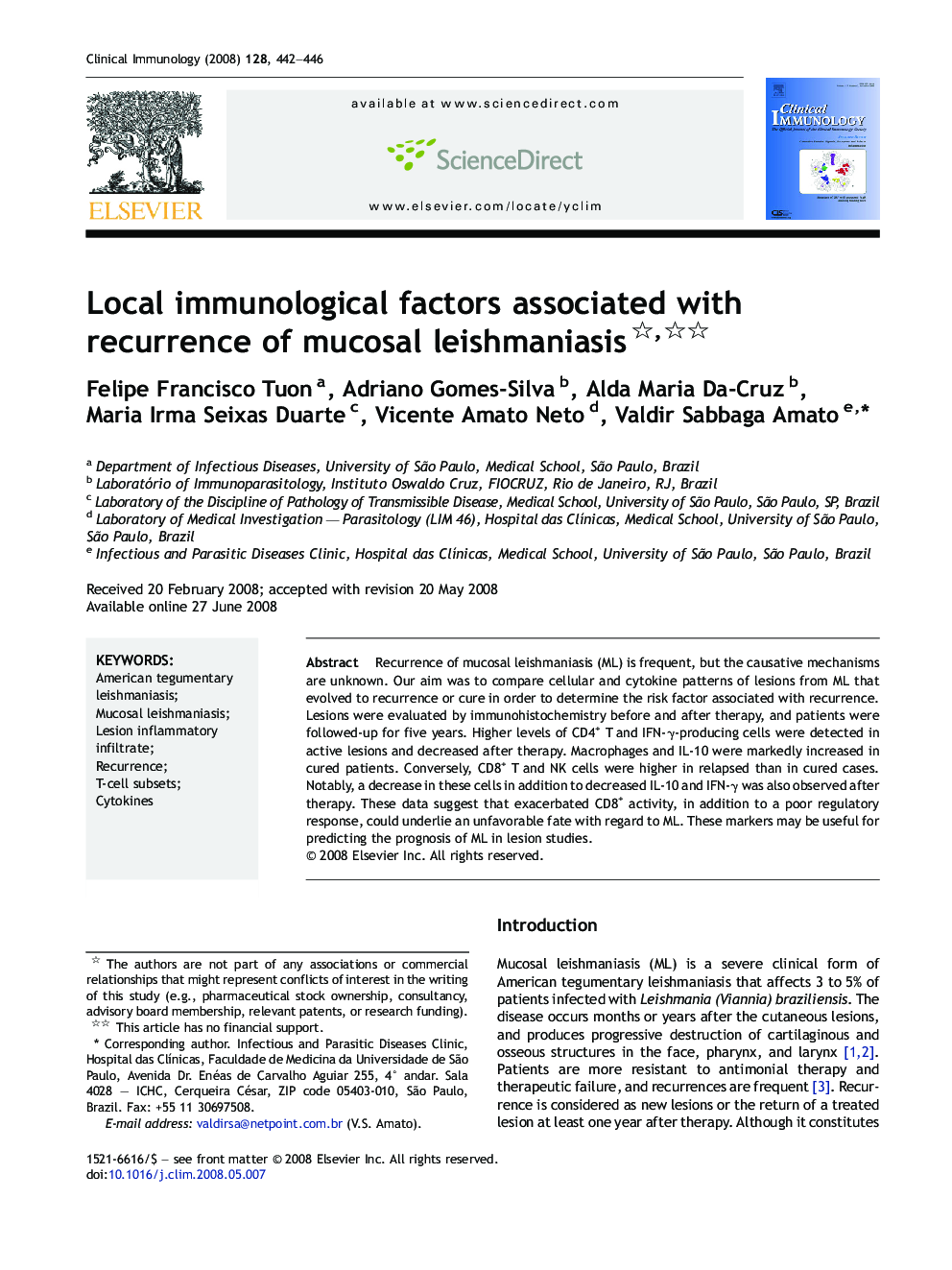| Article ID | Journal | Published Year | Pages | File Type |
|---|---|---|---|---|
| 3258283 | Clinical Immunology | 2008 | 5 Pages |
Recurrence of mucosal leishmaniasis (ML) is frequent, but the causative mechanisms are unknown. Our aim was to compare cellular and cytokine patterns of lesions from ML that evolved to recurrence or cure in order to determine the risk factor associated with recurrence. Lesions were evaluated by immunohistochemistry before and after therapy, and patients were followed-up for five years. Higher levels of CD4+ T and IFN-γ-producing cells were detected in active lesions and decreased after therapy. Macrophages and IL-10 were markedly increased in cured patients. Conversely, CD8+ T and NK cells were higher in relapsed than in cured cases. Notably, a decrease in these cells in addition to decreased IL-10 and IFN-γ was also observed after therapy. These data suggest that exacerbated CD8+ activity, in addition to a poor regulatory response, could underlie an unfavorable fate with regard to ML. These markers may be useful for predicting the prognosis of ML in lesion studies.
